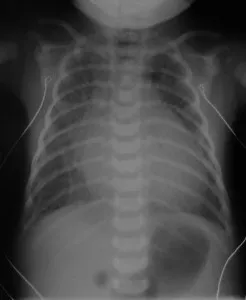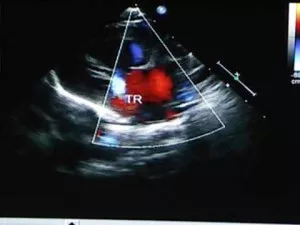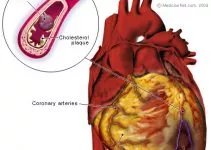Hypoplastic Left Heart Syndrome (HLHS) is a condition in which only the right section of the heart functions properly. Read on to know more about this heart disease, including its causes, symptoms and treatment options.
What is Hypoplastic Left Heart Syndrome?
Page Contents [hide]
- 1 What is Hypoplastic Left Heart Syndrome?
- 2 Hypoplastic Left Heart Syndrome Incidence
- 3 Hypoplastic Left Heart Syndrome Causes
- 4 Hypoplastic Left Heart Syndrome Presentation
- 5 Hypoplastic Left Heart Syndrome Symptoms
- 6 Hypoplastic Left Heart Syndrome Prevention
- 7 Hypoplastic Left Heart Syndrome Diagnosis
- 8 Hypoplastic Left Heart Syndrome Treatment
- 9 Hypoplastic Left Heart Syndrome Follow-up Care
- 10 Hypoplastic Left Heart Syndrome Complications
- 11 Hypoplastic Left Heart Syndrome Prognosis
- 12 Hypoplastic Left Heart Syndrome Recurrence Risk
- 13 Hypoplastic Left Heart Syndrome Life Expectancy
It is a very rare congenital heart condition which causes the left ventricle of the heart to remain critically underdeveloped. Abnormal underdevelopment of fetal heart sections during the first 2 months of pregnancy causes these heart defects. The problem is also known as single ventricle condition.
Hypoplastic Left Heart Syndrome Incidence
This condition generally occurs in four cases out of 10,000 live births and accounts for 8% of all congenital heart diseases. Boys are slightly more prone to this condition than girls.
Hypoplastic Left Heart Syndrome Causes
In HLHS, the left area of the heart is unable to properly pump blood into the body. As a result, the right ventricle has to pump blood into the lungs as well as the entire body. The right part of the body can properly carry out this additional work for a while. Soon, however, the right ventricle starts to fail due to the extra workload.
Picture 1 – Hypoplastic Left Heart Syndrome
Like many other congenital heart conditions, the exact causes for HLHS are not known. The defects in the heart develop before there is proper growth of other cardiac structures, such as:
- Left ventricle
- The entrance and exit to the ventricle
- Aortic valves
- Mitral valves
- Blood vessels of the aorta
The left ventricle and the aorta are very poorly developed in this heart disease.
The occurrence of this disorder is often associated with Gap junction alpha-1 protein. According to a study conducted by the Cincinnati Children’s Hospital, Ohio, season and environment are important factors behind the origin of this condition. The study comprised of findings from around 1500 newborn children from approximately 38 hospitals in the US. The study commenced during the 1990s and ended in 2006. This research showed that babies born in the months of April-July were more susceptible to this heart defect.
Hypoplastic Left Heart Syndrome Presentation
In a healthy heart, the deoxygenated blood from the entire body travels to the right atrium and reaches the right ventricle. The blood is then pumped into the lungs via the pulmonary artery to receive oxygen. The oxygenated blood then leaves the lungs and travels to the left ventricle through the left atrium. The left ventricle pumps the blood to different parts of the body.
In an HLHS patient, almost all the structures in the left part of the heart are underdeveloped and defective. The stage of underdevelopment varies from one patient to another. The structures that are generally affected by this heart defect include:
Mitral valve
It controls the flow of blood from the left atrium to the left ventricle.
Left ventricle
It is the chamber situated at the lower left-hand side of the heart. It is responsible for pumping oxygen-rich blood to the aorta.
Aortic valve
This valve controls the flow of blood to the aorta from the left ventricle.
Aorta
It is responsible for taking the oxygenated blood to various parts of the body.
An underdeveloped left ventricle is probably the most serious defect in HLHS patients. This chamber is responsible for pumping blood to all parts of the body. Due to this reason, it needs to be strong and muscular. When weak and undersized, it cannot function properly.
Hypoplastic Left Heart Syndrome Symptoms
Children born with HLHS do not look any different from a normal baby at the time of birth. However, they get seriously ill within a few days after birth. If left untreated, this condition can turn fatal within the first few days or months of an affected baby’s life. Its common symptoms include:
- Cyanosis or bluish-grey skin color
- Cold feet and hands (extremities)
- Sweaty skin
- Lethargy or lack of energy
- Poor pulse
- Pounding of the heart
- Shortness of breath
- Rapid breathing
- Poor feeding
Without proper treatment, Hypoplastic Left Heart Syndrome can close the natural connection between the right and left sections of the heart. In these cases, a suffering baby is likely to go into a shock and may even die. Some of the main signs and symptoms of a shock are:
- Pale or gray, cool skin
- A weak yet rapid pulse
- Abnormal breathing (Either extremely rapid or very slow)
- Dilated pupils
- Lackluster, staring eyes
- Unconsciousness
Hypoplastic Left Heart Syndrome Prevention
Presently, there is no way to prevent this congenital cardiac defect. Couples with a family history of congenital heart diseases should consult a genetic counselor to evaluate the chances of having a baby with HLHS. Couples who already have a baby suffering from this condition should consult an experienced cardiologist before planning another child.
Various tests, such as the Echocardiogram, may possibly determine whether an unborn child is affected by this congenital defect. Doctors often suggest terminating an infant if it is diagnosed with HLHS. Many parents are opting for termination after learning of confirmed HLHS in their babies.
Hypoplastic Left Heart Syndrome Diagnosis
The symptoms of this condition help in its correct diagnosis. Doctors may perform some physical examinations that may help identify the various signs of heart failure, such as:
- Faster heart rate
- Abnormal heart sounds
- Lethargy
- Rapid breathing
- Liver enlargement
Some other diagnostic tests used for determining this procedure include:
Echocardiogram
One of the common tests used for diagnosing HLHS, it produces a detailed image of the patient’s heart using an ultrasound or echocardiogram sound waves. The process can also be used to diagnose the disorder in an unborn child.
Cardiac catheterization
This test involves insertion of a thin, long tube into one of the arteries of the arm or groin area of an affected baby. An x-ray imaging is then used to guide a catheter into the heart of the patient. Sometimes, doctors perform catheterization to check the functioning of a heart affected by HLHS.
Chest x-ray
The shape and size of the heart and lungs can be determined by a chest x-ray. It also reveals heart enlargement.
Electrocardiogram (ECG)
The sensory patches, attached to the electrodes or wires, help in measuring the electrical impulses emitted by the heart of a suffering child. Any enlargement in the lower-right chamber of the heart can be detected by this medical examination.
Hypoplastic Left Heart Syndrome Treatment
There are two options for curing a child with HLHS. One is a three-step surgical process and another is heart transplant. If an unborn infant is diagnosed with this condition, doctors recommend hospitals with cardiac surgery centers for delivery.
Hypoplastic Left Heart Syndrome Management
Doctors generally recommend various medications and other options for the management of this syndrome prior to a transplant or surgery.
Medications
Alprostadil medication allows expansion of blood vessels and also helps the ductus arteriosus to remain open.
Breathing assistance
Breathing machines or ventilators ensure enough supply of oxygen to the lungs of HLHS patients.
Intravenous fluids
Certain fluids are entered into the body of an affected baby through a tube inserted into his/her vein. These fluids contain essential medications that help the body combat the symptoms of HLHS.
Atrial septostomy
This process creates an opening between the upper chambers of the heart. This is done in case the foramen ovale is found to be closed due to Hypoplastic syndrome. If a baby patient has an atrial septal defect, he or she may not require an atrial septostomy.
Hypoplastic Left Heart Syndrome Surgery
Surgical treatment for this disorder involves a three stage operative procedure. It is not possible to repair the heart defects in an HLHS patient. Surgery makes it possible for deoxygenated blood to flow into the heart normally, to receive oxygen and the oxygenated blood to reach every part of the body. At present, surgeons examine radiologic images of an affected heart to understand the condition properly before performing the operation.
Step 1- The Norwood operation
This surgery is generally carried out within the first 14 days after the baby’s birth. In this process, the aorta is reconstructed and directly connected to the lower right chamber of the heart (right ventricle). This method makes it possible for the right ventricle to pump blood into the lungs as well as the body. However, the skin of a patient continues to be slightly bluish as the deoxygenated and oxygenated blood mingles within the heart (even after the surgery).
Step 2- Hemi-Fontan or bi-directional Glenn Operation
It is carried out when an HLHS patient is aged between 4 and 12 months. The hemi-Fontan procedure decreases the workload of the right ventricle by letting it pump blood primarily to the aorta. It also allows movement of most of the deoxygenated blood straight into the lungs. After this surgery, all the deoxygenated blood from the upper parts of the body directly reaches the lungs, allowing the right ventricle to pump more oxygenated blood to all the organs and tissues in the body.
Step 3- The Fontan procedure
This procedure is performed when an affected baby is 18 to 36 months old. It allows the deoxygenated blood coming from the rest of the body to flow straight into the lungs. The deoxygenated and oxygenated bloods no longer mix with within the heart. Naturally, the skin of patients operated upon no longer appears blue.
Hypoplastic Left Heart Syndrome Heart Transplant
Heart transplant is another surgical option for treatment of this syndrome. The procedure is performed if the heart defects are very complex. The use of certain medications might be necessary before the transplant can be performed.
Hypoplastic Left Heart Syndrome Follow-up Care
Lifelong follow-up care is necessary after a surgery or transplant for HLHS treatment. Patients have to keep regular contact with a cardiologist, specializing in congenital heart diseases. The cardiologist will monitor the health of the patient’s heart. The HLHS affected individual may also require some medications to ensure proper functioning of the heart. Anti-rejection medication will be necessary for a baby who has received a heart transplant.
Hypoplastic Left Heart Syndrome Complications
The following complications are associated with the HLHS surgery:
- Artificial shunt blockage
- Chronic diarrhea
- Fluid accumulation in the in the lungs and the abdomen
- Heart failure
- Cardiac arrhythmia or irregular heart rhythms
- Nervous system complications and strokes
- Sudden death
This condition may result in premature death of a suffering child if not treated properly from the very early stages. With the discovery of proper treatments, the mortality rate for HLHS is now reducing at a rapid rate.
Hypoplastic Left Heart Syndrome Prognosis
Picture 2 – Hypoplastic Left Heart Syndrome Image
This heart defect can be fatal if left untreated. But, the affected child can have a long and normal life with proper treatment and surgery. The survival rates become higher once the Hypoplastic Left Heart Syndrome patient successfully passes through the first stage of surgery.
Hypoplastic Left Heart Syndrome Recurrence Risk
Current researches show Hypoplastic Left Heart Syndrome to be a hereditary condition. According to these studies, this condition occurs due to various genetic causes. The recurrence risk of HLHS in the siblings of an affected child is 0.5 %. There is a 13.4% chance that the siblings of a HLHS patient will have other forms of congenitally defective hearts.
Hypoplastic Left Heart Syndrome Life Expectancy
The life expectancy varies from patient to patient depending on the success of the surgeries. But generally, the surgeries or heart transplant allows a baby with HLHS to reach adulthood. They can also lead a fairly normal life with some restrictions.
Hypoplastic Left Heart Syndrome is an incurable congenital heart condition. However, with proper treatment, the defective heart can be made workable to so that a suffering individual can have a reasonably long and happy life. There are many support groups who provide guidance and awareness to the families of children affected by this disorder.
References:
http://www.ncbi.nlm.nih.gov/pubmedhealth/PMH0002096/
http://www.cincinnatichildrens.org/health/h/hlhs/
http://www.chw.org/display/PPF/DocID/23065/router.asp
http://emedicine.medscape.com/article/890196-treatment#showall



